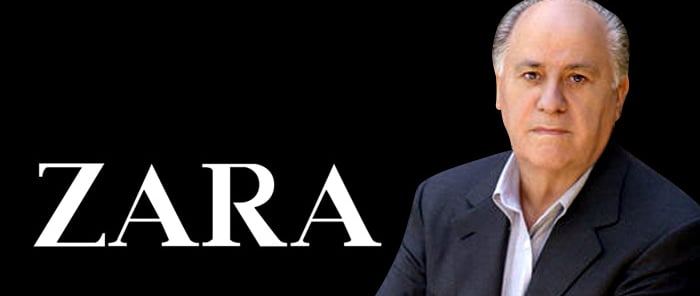How a Homeless Teen Built a $30 Billion Fashion Empire
From sleeping in shelters to running one of the biggest fashion empires in the world, this is the story of Amancio Ortega — the founder of Zara. Born into poverty, Ortega worked as a delivery boy before starting his first garment workshop. He didn’t have formal education, but he had vision. His big idea? Fast fashion. Ortega created a supply chain so responsive, Zara could take an idea from sketch to store in just two weeks. This efficiency, paired with an obsession over customer preferences, helped him scale globally — and turn Zara into a $30 billion empire.
MONEY MOTIVATION
Thrivevision
4/5/20252 min read


From Humble Beginnings to a Fashion Empire: The Story of Amancio Ortega and Zara
Before Zara became a global fashion powerhouse, and before billions of dollars were attached to his name, Amancio Ortega was just a boy from a poor Spanish family with nothing but determination in his pocket. His story isn’t just one of success—it’s one of grit, vision, and redefining an entire industry.
The Early Struggles
Ortega’s journey began in poverty. Born in 1936 in a small town in Spain, he dropped out of school early and started working as a delivery boy for a local shirtmaker. He watched, listened, and learned—not just about clothes, but about people. What they liked, how they shopped, and how slowly the fashion world moved.
For a while, Ortega lived close to the edge, even sleeping in shelters during tough times. But through it all, he kept a dream alive: to make fashion faster, more accessible, and closer to what customers actually wanted.
A Big Idea: Fast Fashion
In the 1970s, Ortega started a small garment workshop called Confecciones Goa, making quilted bathrobes. That modest beginning eventually evolved into Zara, the brand that would revolutionize the fashion industry.
What made Zara different? Ortega’s genius was in speed and responsiveness. While traditional retailers took months to bring new styles to stores, Zara could do it in just two weeks. From sketch to shelf, his supply chain was a finely-tuned machine—nimble, efficient, and always customer-focused.
He built a model where stores communicated real-time feedback directly to designers and manufacturers. If a trend was rising, Zara didn’t wait—they delivered fast, often refreshing collections multiple times a season. Fashion wasn’t just seasonal anymore—it was now.
Listening to the Customer
Ortega wasn’t interested in celebrity endorsements or flashy campaigns. Zara rarely advertises. Instead, he focused obsessively on understanding the customer—watching behavior, tracking demand, and using data long before it was trendy.
That customer-first mindset became a cornerstone of Zara’s DNA. The company created clothes people actually wanted, at prices they could afford, and made sure they hit the racks before the trend faded.
Building a $30 Billion Empire
With this agile approach, Zara didn’t just grow—it exploded. Ortega’s parent company, Inditext, now owns several major brands, but Zara remains the jewel of the crown. The company operates in over 90 countries, and Ortega himself rose to become one of the richest people in the world.
Yet despite his wealth, Ortega has always been famously private—rarely giving interviews, keeping his personal life low-key, and letting his work speak for itself.
Final Thoughts
Amancio Ortega’s story is proof that vision beats privilege, and that a relentless focus on innovation and customers can change an entire industry. From sleeping in shelters to reshaping global fashion, Ortega didn’t just build a brand—he built a legacy. And he did it not with a degree or a head start, but with hustle, humility, and an unshakable belief in doing things differently.
Inspiration
Explore success stories and motivational journeys today.
Growth
Vision
© 2025. All rights reserved.
